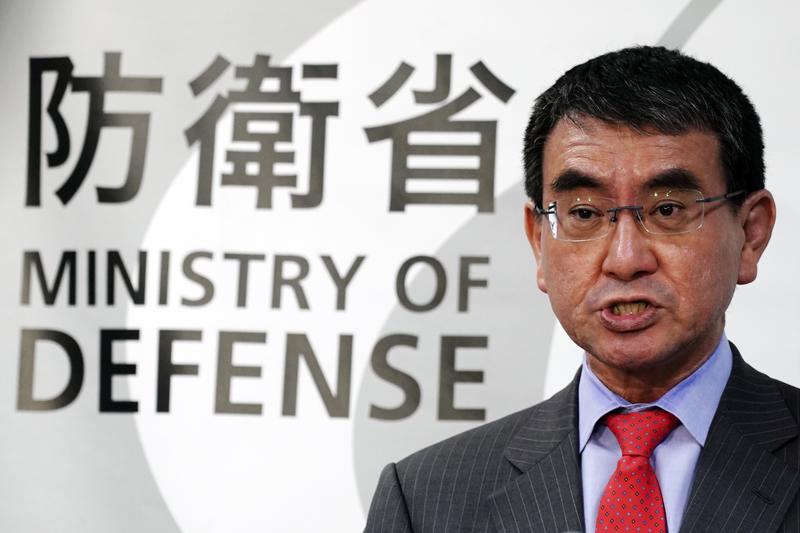 In this Jan 10, 2020, file photo, Japanese Defense Minister Taro Kono speaks during a press conference at his ministry in Tokyo. (EUGENE HOSHIKO / AP)
In this Jan 10, 2020, file photo, Japanese Defense Minister Taro Kono speaks during a press conference at his ministry in Tokyo. (EUGENE HOSHIKO / AP)
TOKYO - Japanese Defence Minister Taro Kono said on Monday that he had suspended plans to deploy two US-made Aegis Ashore air defence radar stations designed to detect and counter North Korean ballistic missiles.
I made a decision on Friday to suspend the process...For the time being, Japan will continue to counter (the threat) with Aegis-equipped ships.
Taro Kono, defence minister of Japan
Kono told reporters that Japan was halting the deployment due to technical issues as well as cost. The two proposed Lockheed Martin Co radar sites, one in the northern prefecture of Akita and the other in Yamaguchi prefecture in southern Japan, had also faced opposition from local residents.
With radars more powerful than the ship-based version of Aegis that Japan already operates, the planned stations were meant to help counter recent missile advances by North Korea and relieve pressure on Japan's stretched navy.
"I made a decision on Friday to suspend the process... For the time being, Japan will continue to counter (the threat) with Aegis-equipped ships" said Kono.
ALSO READ: Japan gets its 8th defense budget hike, hits US$48.56b
North Korea, which is threatening military action against South Korea unless it stops defectors from sending leaflets and other material to the North, last year tested a series of new ballistic missiles with irregular trajectories that Japan said appeared designed to penetrate Aegis defences.
The two planned Aegis Ashore systems would cost about 439 billion yen (US$4.1 billion) for operation and maintenance for the next 30 years, according to defence ministry documents.
That price tag comes as Japan faces an economy weakened by the coronavirus pandemic and unprecedented stimulus spending that is putting pressure on government finances.
According to the plans, the sites were to be initially armed with SM-3 Block IIA interceptor missiles designed to shoot down warheads in space. Japan, however, will have to pay to test those interceptors at a US military test site in Hawaii before deployment, further adding to the cost of the Aegis Ashore system.
READ MORE: Japan to spend more on defense, refit 1st aircraft carrier
Tests for the SM-3 Block IIA missiles alone could cost at least US$500 million, sources with knowledge of the programme told Reuters last year.


